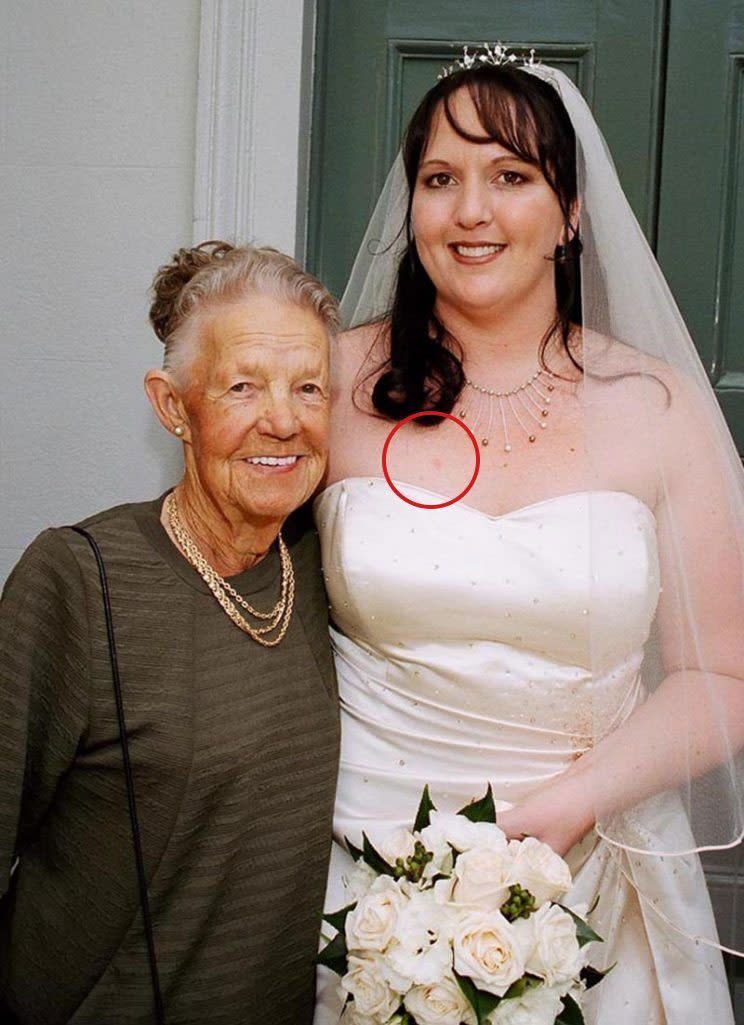5 Lessons for Spotting Melanoma From People Who Found It Themselves

Melanoma Monday kicks off Skin Cancer Awareness Month in May, encouraging people to check their skin regularly and be able to spot skin cancer. Melanoma is the most dangerous form of skin cancer and either grows from or resembles a mole. If melanoma is treated early, it is almost always curable, but if it is not, the cancer can spread to other parts of the body, becoming hard to treat. According to the Skin Cancer Foundation, one in five Americans will get skin cancer, and while melanoma is the least common form, it is the most deadly.
Knowing the warning signs for skin cancer is the best way to stay safe, and lots of people have saved their own lives this way. Scroll for five lessons that their stories can teach us all.
1. Know your risk
Some people are more susceptible to skin cancer than others. Genetics, environment, and lifestyle all play a role. In February, 48-year-old actor Hugh Jackman went into treatment for his fifth round of basal cell carcinoma, the most common form of skin cancer. In the past, his wife has found cancerous lesions on him during regular skin checks. Living in Australia, the country with the highest rate of melanoma (second only to New Zealand) due to its extremely high UV levels, Jackman’s skin cancer risk is particularly high.
A post shared by Hugh Jackman (@thehughjackman) on Feb 13, 2017 at 12:42pm PST
Modern Family actor Jesse Tyler Ferguson found a skin cancer lesion on his face, and as a redhead, Ferguson is 10 to 100 times more likely to develop melanoma than people with other hair colors, according to the National Institutes of Health. Having blond hair or skin that freckles or burns easily also raises a person’s risk.
Perhaps more unexpectedly, though, young adults with melanin-rich skin are more likely to sunburn. Melanoma is linked to frequent sunburns, and those with darker skin are also less likely to survive skin cancer.
2. Ask your partner or a friend to look
Bravo host Andy Cohen revealed that Kelly Ripa was the one who spotted his melanoma. She noticed a black dot on Cohen’s lower lip and urged him to have it checked out by a doctor, despite Cohen’s insisting that it was probably nothing. The dot ended up being cancerous.
A post shared by Andy Cohen (@bravoandy) on Apr 5, 2017 at 10:15am PDT
A 2016 study revealed that friends can be very helpful in spotting melanomas, particularly when they’ve been taught what to look out for. Couples in the study who were trained in skin examination spotted 51 early melanomas, compared with 18 melanomas in an untrained group.
3. Check your selfies
Use selfies and other photos to keep track of the development of your skin. Any abnormal changes may show up in your photos and could be key to spotting cancerous lesions.
One woman was diagnosed with skin cancer on her chest, and her 2007 wedding photos show early signs of the cancer that could have sped up her diagnosis and prevented what she calls a “massive” scar.

Likewise, one woman’s bikini selfies helped her notice the changes in a large mole on her abdomen, prompting her to have it checked out. She was eventually diagnosed with melanoma, which went deep into her skin and required a sizeable area of skin to be removed.
4. Know your ABCDEs
The ABCDE trick helps to remind people of the warning signs for skin cancer. If your mole is Asymmetrical, has irregular Borders, contains more than one Color, has a Diameter bigger than the size of a pencil eraser, or Evolves over time, you need to get it checked.
One woman’s small freckle on her forehead started to change, with a brown spot appearing on one side of it, prompting a diagnosis of basal cell carcinoma, the most common form of cancer in America. She noticed the change while on vacation in the Himalayas and knew that colors can indicate cancerous cells.
5. Count the moles on your arms
After a skin cancer scare in the summer of 2016, Khloé Kardashian urged her followers to have regular skin cancer screenings. The 32-year-old had a suspicious mole that turned out to be cancer and ended up having 8 inches of skin removed. “I’ve gone through this process a couple of times and I am so grateful that most moles have not been cancerous,” Kardashian wrote on her app. “I urge you to check yourself frequently! I haven’t had a problem in years, but wanted to share my experience with you so that if you notice something doesn’t look right, you will take action and take care of your health!”
A post shared by Khloe Kardashian Snapchats❕ (@khloesnapchats) on Dec 4, 2016 at 9:27pm PST
Kardashian has lots of moles and has had many removed as well, which can be a way to predict skin cancer. A 2015 study found that those who have more than 11 moles on their more sun-exposed arm (in the U.S., it’s the left arm) are more likely to have more than 100 moles total — a skin cancer risk predictor.
Spend this month getting to know your skin, talking to your doctor about your risk, and educating yourself about skin cancer before the summer.
Read more from Yahoo Style & Beauty:
Follow us on Instagram, Facebook, and Pinterest for nonstop inspiration delivered fresh to your feed, every day. For Twitter updates, follow @YahooStyle and@YahooBeauty.

